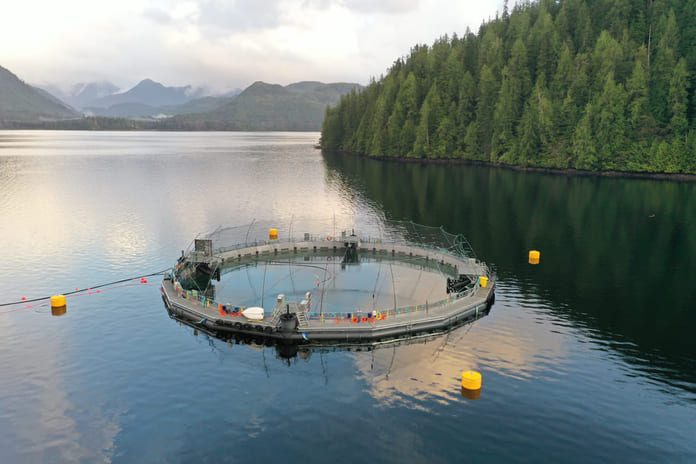Cermaq is now embarking on the third round of salmon production in closed cages, without the need for delousing.
In the neighboring cage, with a traditional net, they have had to de-lice several times.
It is precisely the combination of closed-containment cage and open cage next to each other, which makes the closed-containment cage of Cermaq, called Certus, a favorite research object. The research is done in CtrlAQUA, a Nofima-led centre for research-driven innovation (SFI) in farming in closed systems.
Nofima researchers and Cermaq have directly compared measurements from the two types of production, and obtained valuable information about the differences in growth, feed consumption, lice and welfare.
Harald Takle is head of innovation and development in the sea at the fish farming company Cermaq, and he summarised the results of the research as “the most important quality sign for Certus is that we have not had lice. Growth is also slightly better even with significantly higher fish density in Certus, and mortality is equally low in both facilities”.
The good growth in Certus, he explained, is a slightly better temperature, and more stable water environment than in an open field. The first closed-containment cage of 10,400 m3 was put out in 2018 in Nordland, Norway, and a larger and improved version (15,000 m3) was put out in Canada in 2020.
It is the technology provider and CtrlAQUA partner Fiizk who has developed the cage, with Cermaq as the “very demanding client”, according to Takle.

“We now have a promising technology that is in an early phase of development. If it is to be competitive against RAS and open sea cages, we must continue to improve the fish’s performance and reduce the cost level,” said Takle.
Bottleneck for increased production
He believes that the Norwegian aquaculture industry will have a bottleneck in growth if one does not succeed in the efforts of closed facilities in the sea.
“The most important thing about closed facilities in the sea is to reduce the total lice pressure and increase the share of post-smolt to make growth possible in exposed facilities and offshore. Exposed facilities require post-smolt to ensure good fish welfare and at the same time shorten the production cycle,” he said.
“As of today, the framework conditions for closed-containment facilities are too poor. Uncertainty is associated with important regulatory factors, while we lack sufficient evidence about the effects of closed-containment facilities, and with only a closed track, it becomes difficult to get good enough quality in the documentation. Then investing will be a big risk. So for us, the focus is currently on hold for Norway,” Takle added.
Challenges that are crucial to solving
Cermaq summarises its foremost challenges in the words predictability and cost-effectiveness: cost-effective purification of intake water, sludge management, oxygenation, as well as predictable framework conditions and the need for its own licensing scheme for closed facilities. He also called for schemes that stimulate technology development where it is taken into account that closed facilities still have a large R&D need for the technology to succeed.

Of these challenges, researchers at CtrlAQUA work specifically on the purification of the intake water. By purifying the intake water, the breeder can freely move the fish to other cages without applying for an exemption. This is very important for a cost-effective production of post-smolt to exposed facilities and offshore production.
Nofima works with the purification of the intake water and finds that the use of UV can remove up to 99 per-cent of some of the most common microparasites.
Amazing collaboration
In the development and testing of Certus, there are a number of companies and research institutes in the CtrlAQUA centre that contribute. Tackle is eager to find out why it is important to be part of this centre:
“It is a fantastic meeting place, melting pot and information exchange channel, where you can discuss current and future challenges and address them together. With all the partners who are part of an SFI, you get a wide experience from the industry combined with a pool of researchers, all of whom meet at themed meetings and annual meetings in the centre. There we have very good and open discussions,” Takle said.


